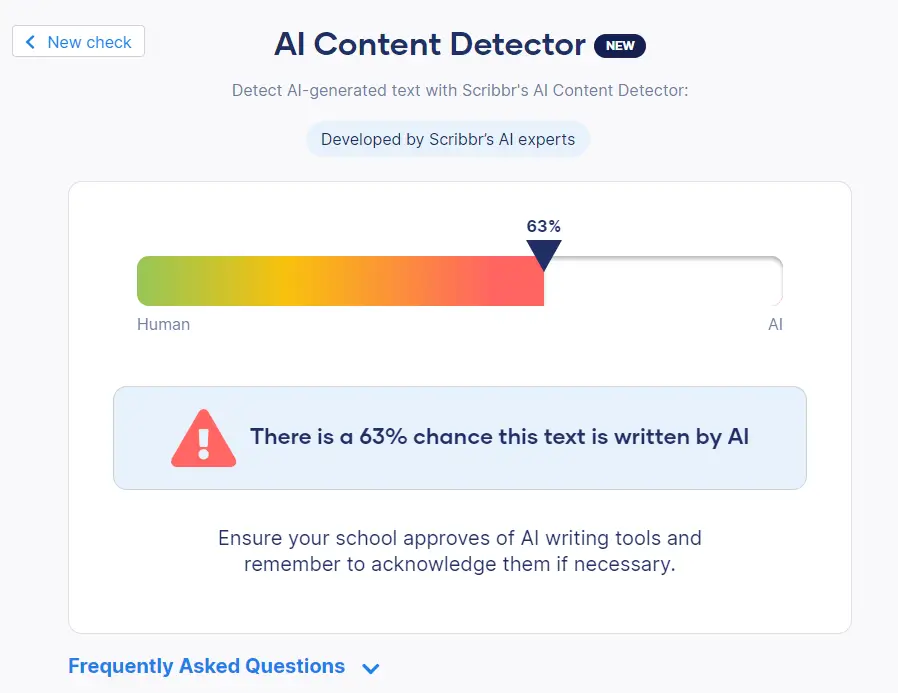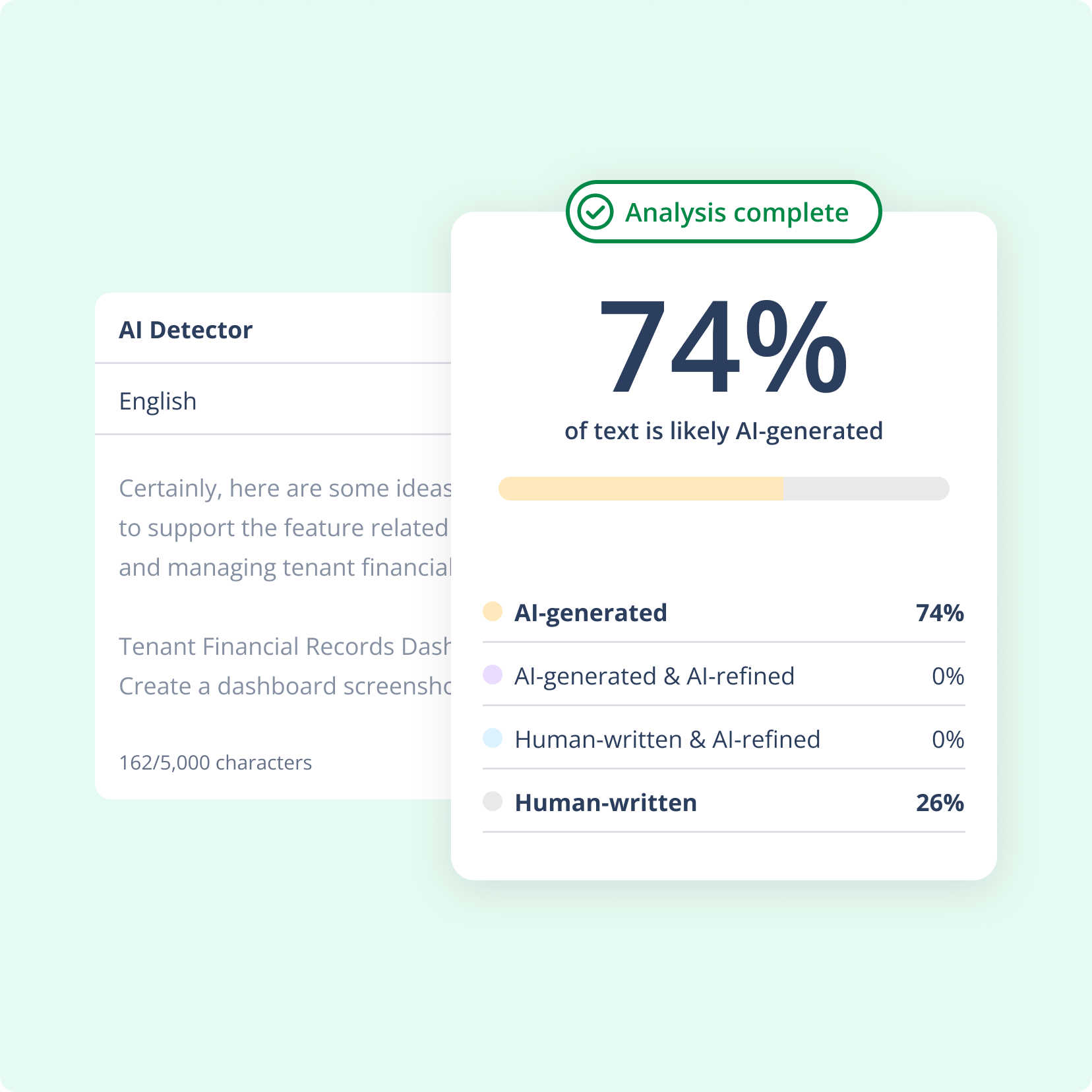Comprehending the Significance of an Ai Detector in Today's Digital Landscape
As man-made intelligence continues to penetrate numerous aspects of content production, identifying in between human-generated and machine-generated product has actually ended up being progressively intricate. This developing landscape offers significant challenges connected to authenticity and trustworthiness, requiring the advancement of AI detection tools. These instruments not only help in determining AI-produced web content however additionally support the integrity of information dissemination. Understanding their role becomes essential as we navigate a future where the credibility of media is under continuous examination. What ramifications might this have for makers and customers alike?
The Increase of AI Web Content

The rise of AI-generated web content has considerable ramifications for different sectors, consisting of advertising, enjoyment, and journalism - ai detector. Organizations are increasingly utilizing these technologies to enhance performance, personalize web content, and involve target markets much more properly. The ability to assess large datasets enables AI systems to tailor web content to fulfill details individual preferences, supplying a more customized experience
However, the spreading of AI material additionally elevates important factors to consider for content designers and customers alike. As AI becomes more integrated into material production workflows, recognizing the subtleties of AI-generated material is crucial for preserving top quality and relevance in a rapidly developing digital environment. Accepting this technical improvement while remaining alert concerning its effects is important for stakeholders in the digital media landscape.
Difficulties of Authenticity
The introduction of AI-generated web content has actually presented considerable obstacles regarding credibility in electronic media. As formulas become more advanced, comparing human-created and machine-generated content becomes significantly tough. This obscuring of lines increases concerns about the reputation of information and the possibility for false information to multiply.
One of the key difficulties is the erosion of trust fund amongst consumers. With AI with the ability of generating realistic message, images, and videos, individuals might discover it challenging to recognize genuine sources from deceitful ones. This suspicion can bring about a more comprehensive mistrust of all electronic material, complicating efforts to recognize reliable info.
Furthermore, the ramifications for copyright are substantial. As AI devices create content based upon existing jobs, questions pertaining to ownership and originality occur. Web content creators may have a hard time to shield their work from anonymous AI recreations, threatening their legal rights and resources.
Finally, the possibility for malicious uses of AI-generated material, such as deepfakes and automatic propaganda, presents significant moral and social threats. These difficulties emphasize the immediate need for frameworks that maintain credibility in the digital landscape, making certain that details continues to be reliable and reliable.
Duty of AI Detectors
Resolving the difficulties of credibility in digital media needs ingenious options, and AI detectors have become an essential device in this effort. These innovations are developed to examine and determine content generated by expert system, thereby facilitating the discernment between machine-generated and human-created materials. The role of click to investigate AI detectors prolongs beyond mere identification; they additionally add to maintaining the integrity of information eaten by the public.
AI detectors use advanced algorithms to inspect various elements of electronic material, consisting of etymological patterns, structural abnormalities, and particular markers that indicate automation. Their application spans several fields, consisting of journalism, education and learning, and social networks, where the presence of AI-generated content can result in false information and erosion of trust fund.

Advantages of Making Use Of AI Detectors
Guaranteeing authenticity in digital material symbolizes the fundamental requirement for trust fund in information sources, and AI detectors act as an effective ally in this search. By identifying AI-generated web content, these tools help keep the honesty of info, therefore shielding individuals from misinformation and enhancing overall material top quality.
One of the primary advantages of utilizing AI detectors is their capability to simplify content verification processes, significantly minimizing the moment and initiative required to assess the authenticity of digital materials. This effectiveness permits material designers, teachers, and companies to focus on generating trustworthy and top notch info, instead than spending too much resources on fact-checking.
Furthermore, AI detectors foster responsibility amongst material creators. The understanding that AI-generated content can be recognized motivates transparency and ethical practices in material manufacturing. This, consequently, adds to a more enlightened electronic area, as customers can confidently engage with confirmed info.
Future of Web Content Verification
As the landscape of digital content proceeds to progress, the future of material verification provides both tests and possibilities for keeping authenticity. As AI modern technologies advancement, so too do the methods for sharing and developing false information (ai detector). This arms race between material creators and confirmation tools demands the growth of more advanced AI detectors capable of discerning authentic content from manipulated see this page or made material

In addition, the rise of decentralized innovations, such as blockchain, holds pledge for validating material provenance, ensuring that customers can trace the beginnings of the details they consume. Ultimately, the future of content verification will certainly rest on our ability to innovate in the face of advancing threats, fostering an electronic environment where authenticity is identified and promoted as a basic principle.
Conclusion
In conclusion, the spreading of AI-generated web content demands robust devices for credibility verification. AI detectors offer a crucial function in discerning machine-produced products, thus improving count on and responsibility within the electronic environment. As misinformation remains to develop, the application of reliable detection tools will be crucial for protecting the stability of information and cultivating a much more enlightened community. The future of web content verification depends upon the efficiency of AI detectors in keeping reliability across different media systems.
AI material creation tools, such as all-natural language handling versions and generative adversarial networks, make it possible for people and organizations to generate high-grade web content at extraordinary speeds and reduced prices.
Nevertheless, the proliferation of AI content additionally increases crucial factors to consider for material developers and customers alike. As the elegance of AI-generated web content proceeds to advance, the function of AI detectors comes to be significantly crucial in securing authenticity and advertising transparency in electronic interaction. The expertise that AI-generated content can be recognized encourages openness and ethical techniques in material manufacturing.As the landscape of digital material continues to advance, the future of material verification tests both presents and possibilities for preserving credibility.